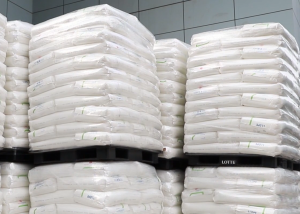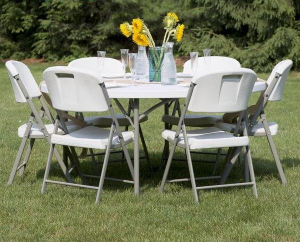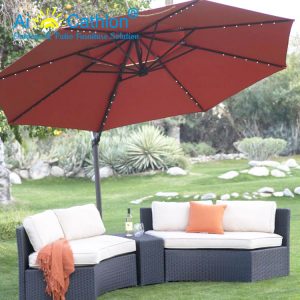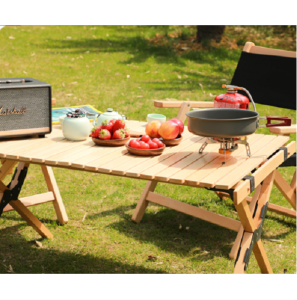More
Eco-Friendly Materials for Outdoor Furniture
Eco-Friendly Materials for Outdoor Furniture
As we become more environmentally conscious, we are starting to pay closer attention to the impact of the products we buy on the environment. One area that often goes overlooked is outdoor furniture. From patio sets to garden chairs, outdoor furniture can have a significant environmental impact. This article will explain the importance of environmentally friendly materials for outdoor furniture from two aspects. One is the benefits of environmentally friendly materials, and the other is the impact of traditional outdoor furniture materials and manufacturing processes on the environment.
The first is what eco-friendly materials are available for outdoor furniture and the benefits of each.
1. Recycled Plastic
Recycled plastic is a popular material for outdoor furniture as it is made from post-consumer plastics, such as milk jugs and soda bottles. It’s durable, weather-resistant, and doesn’t require staining or sealing, making it low-maintenance. By using recycled plastic, we can reduce waste and keep plastic out of landfills.
By using recycled materials such as recycled plastic, we can reduce the amount of waste that would otherwise end up in landfills. Additionally, these materials can often be recycled again at the end of their lifespan, creating a closed-loop system that reduces waste.
The concept of recycled plastic can be a little vague. Taking HDPE as an example, let me explain to you what is recycled plastic.
HDPE stands for high-density polyethylene, which is a type of plastic material that is commonly used for making recycled plastic products, including outdoor furniture. While HDPE can be made from both virgin and recycled plastic, it is a popular choice for recycled plastic furniture because it is durable, weather-resistant, and easy to work with.
Recycled HDPE is made by collecting and processing post-consumer plastic waste, such as milk jugs and soda bottles, and then shredding the plastic into small pieces. The shredded plastic is then melted and formed into pellets, which can be used to create a variety of products, including outdoor furniture.
Using recycled HDPE for outdoor furniture production can help reduce the amount of plastic waste that ends up in landfills and the environment. It can also help promote sustainability and reduce the environmental impact of furniture production, as recycled HDPE requires less energy to produce than virgin plastic.
2. Bamboo and Teak
Bamboo is a sustainable material that is known for its rapid growth and low environmental impact. It’s naturally resistant to insects and can be used to create durable and stylish outdoor furniture. Additionally, bamboo releases more oxygen into the atmosphere than most other plants, making it an excellent choice for eco-friendly furniture.
Teak is a durable and long-lasting wood that is known for its natural resistance to water, decay, and insects. It is a popular choice for outdoor furniture, and when harvested from sustainable sources, it can be an eco-friendly option. Additionally, teak wood can be recycled and repurposed, reducing waste.
Sustainable materials such as bamboo and teak can be grown and harvested in a way that minimizes their impact on the environment. This helps conserve natural resources and preserve habitats for wildlife.
3. Aluminum
Aluminum is a lightweight and corrosion-resistant metal that is commonly used in outdoor furniture production. It is durable, easy to maintain, and recyclable. Additionally, using recycled aluminum for furniture production can help reduce the environmental impact of manufacturing.
Many eco-friendly materials, such as recycled plastic and aluminum, require less energy to produce than traditional materials such as wood or metal. This can help lower the carbon footprint of outdoor furniture production and reduce the associated greenhouse gas emissions.
The second environmental impact of traditional outdoor furniture materials and manufacturing processes.
The manufacturing and use of traditional outdoor furniture can have several negative environmental impacts. Here are some of the most significant impacts.
1. Deforestation
The use of wood for outdoor furniture production contributes to deforestation, which destroys critical habitat for wildlife and disrupts the balance of ecosystems.
2. Chemical Pollution
The use of synthetic materials and chemicals in outdoor furniture production can release toxic chemicals into the environment, contributing to pollution and potential health hazards.
3. Greenhouse Gas Emissions
The manufacturing of traditional outdoor furniture often involves energy-intensive processes that generate significant amounts of greenhouse gas emissions. These emissions contribute to global climate change and the associated environmental and economic impacts.
4. Landfill Waste
Traditional outdoor furniture often has a short lifespan due to wear and tear or changing design trends. This can lead to large amounts of furniture being discarded in landfills, where it can take decades to decompose and release harmful chemicals.
By considering the environmental impact of traditional outdoor furniture and manufacturing processes, we can make more sustainable choices that reduce our impact on the environment. Choosing eco-friendly materials, supporting sustainable manufacturing practices, and reducing waste can all make a significant difference in creating a more sustainable and eco-friendly outdoor living space.
As a manufacturer of outdoor tables and chairs with 15 years of experience, we choose HDPE as the raw material of our plastic folding tables and chairs, precisely because of its recyclable feature.
As we continue to become more aware of the environmental impact of our choices, choosing sustainable and eco-friendly outdoor furniture is an important step towards creating a more sustainable future. By using materials such as recycled plastic, bamboo, and teak, we can create outdoor living spaces that are both stylish and functional, while also reducing our impact on the environment.
With the vast array of eco-friendly outdoor furniture options available today, it’s easier than ever to create an outdoor living space that is both sustainable and beautiful. By choosing eco-friendly materials, we can help reduce waste, conserve natural resources, lower our carbon footprint, and create durable and low-maintenance products that will stand the test of time.
So, whether you’re looking to update your backyard, patio, or balcony, consider choosing eco-friendly outdoor furniture. By doing so, you’ll not only create a beautiful and functional space but also contribute to a more sustainable future for our planet.











